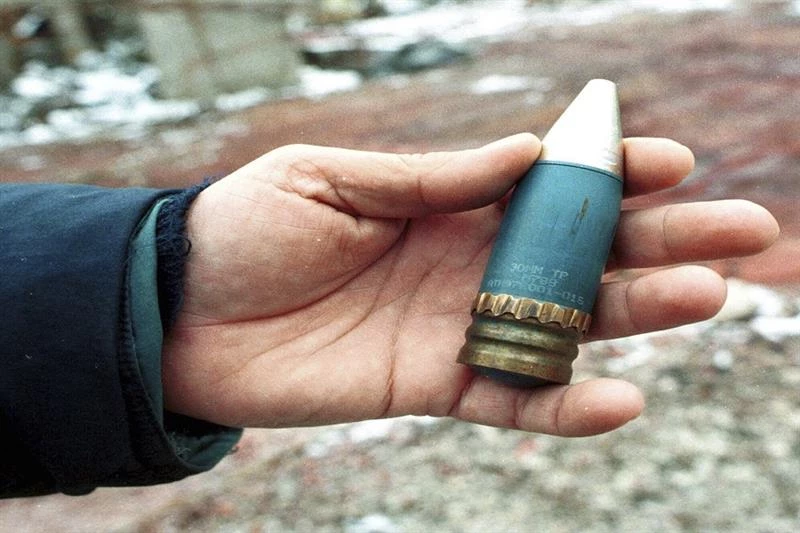The United States announced on Wednesday that it will provide depleted uranium tank ammunition to Ukraine as part of a $175 million aid package.
Britain made a similar statement in March, when a defence minister said it would provide Ukraine with depleted uranium rounds.
Russian President Vladimir Putin has warned that he would deploy depleted uranium ammunition if Ukraine received the arms.
Depleted uranium munitions are highly effective at piercing armour plate, but their use is controversial.
The metal is toxic for the soldiers who use the weapons and for civilians in areas where they are fired.
- What are depleted uranium munitions? -
Depleted uranium is a byproduct of the process of enriching uranium, and is about 60 percent less radioactive than uranium in its natural state.
Uranium is an extremely dense metal -- about 1.7 times more dense than lead. It is so hard that it does not change shape when it hits a target. So depleted uranium is used in shells and bombs to give them more power to punch through metal.
"This is a commonplace type of munition that is used particularly for its armor-piercing capabilities," United States National Security Council spokesman John Kirby said Wednesday.
Kirby said the munitions are not radioactive and "not anywhere close to going into" the sphere of nuclear weaponry.
Using depleted uranium shells is not banned under international law.
- Who has used such weapons? -
Depleted uranium munitions are part of the military arsenals of many countries, in particular those of the United States and Russia.
They were used in both Gulf wars in 1991 and 2003 and in the former Yugoslavia in the 1990s.
The Pentagon has acknowledged using depleted uranium ordnance twice in 2015 in raids against the Islamic State group in Syria.
Britain's announcement this week that it will provide such ammunition to Ukraine was denounced by Russia as a "serious" escalation of the war.
- Do these munitions pose a health or environmental risk? -
The United Nations Environment Programme defines depleted uranium as a heavy metal that is toxic and radioactive.
Upon striking their target, depleted uranium shells release uranium oxide dust and fragments into the air.
In terms of health, the main risk of depleted uranium is not radioactivity but chemical toxicity, according to Canada's nuclear safety commission.
"Ingestion or inhalation of large quantities of DU can affect the kidney," the commission says.
And if a person breathes in a lot of uranium dust over an extended period of time, the main health worry is increased risk of lung cancer, says the panel.
Depleted uranium munitions have been cited as one of the possible causes of health problems among people who fought in the Gulf wars or a potential cause of high levels of cancer and birth defects in the Iraqi city of Fallujah. But the role of the munitions in these problems has not been scientifically proven.
Many studies have concluded that depleted uranium is toxic, but these results remain controversial.
"In studies in which the International Atomic Energy Agency was involved the resulting radiological risk to the public and the environment was not significant in situations where depleted uranium is observed in the form of localised contamination of the environment by small particles resulting from the impacts," said the UN Office for Disarmament Affairs.
"However, in the situations where fragments of, or complete, depleted uranium ammunitions were found, there is a potential risk of radiation effects for individuals who come into direct contact with such fragments or ammunitions," the office says.


